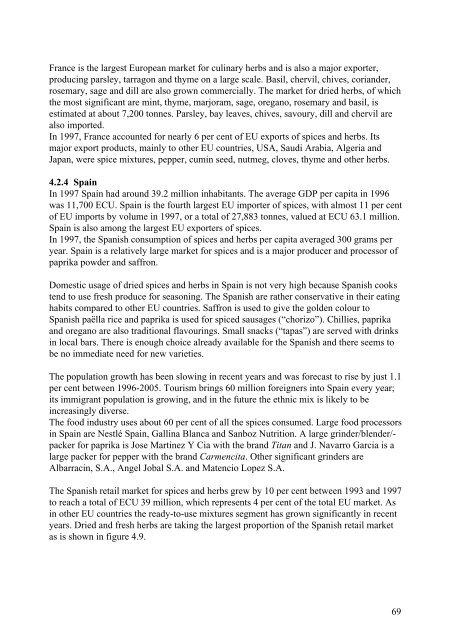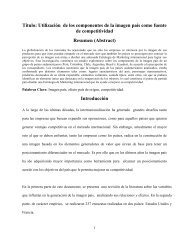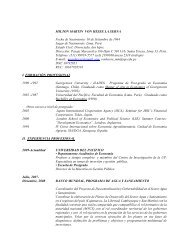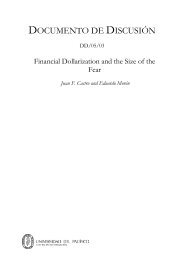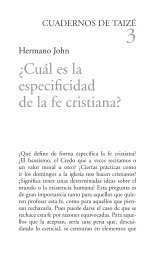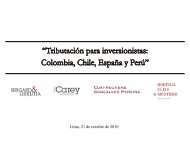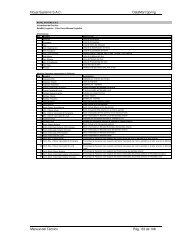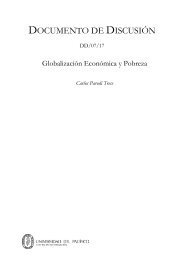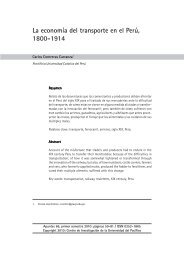Spices and Herbs
Spices and Herbs
Spices and Herbs
You also want an ePaper? Increase the reach of your titles
YUMPU automatically turns print PDFs into web optimized ePapers that Google loves.
France is the largest European market for culinary herbs <strong>and</strong> is also a major exporter,<br />
producing parsley, tarragon <strong>and</strong> thyme on a large scale. Basil, chervil, chives, cori<strong>and</strong>er,<br />
rosemary, sage <strong>and</strong> dill are also grown commercially. The market for dried herbs, of which<br />
the most significant are mint, thyme, marjoram, sage, oregano, rosemary <strong>and</strong> basil, is<br />
estimated at about 7,200 tonnes. Parsley, bay leaves, chives, savoury, dill <strong>and</strong> chervil are<br />
also imported.<br />
In 1997, France accounted for nearly 6 per cent of EU exports of spices <strong>and</strong> herbs. Its<br />
major export products, mainly to other EU countries, USA, Saudi Arabia, Algeria <strong>and</strong><br />
Japan, were spice mixtures, pepper, cumin seed, nutmeg, cloves, thyme <strong>and</strong> other herbs.<br />
4.2.4 Spain<br />
In 1997 Spain had around 39.2 million inhabitants. The average GDP per capita in 1996<br />
was 11,700 ECU. Spain is the fourth largest EU importer of spices, with almost 11 per cent<br />
of EU imports by volume in 1997, or a total of 27,883 tonnes, valued at ECU 63.1 million.<br />
Spain is also among the largest EU exporters of spices.<br />
In 1997, the Spanish consumption of spices <strong>and</strong> herbs per capita averaged 300 grams per<br />
year. Spain is a relatively large market for spices <strong>and</strong> is a major producer <strong>and</strong> processor of<br />
paprika powder <strong>and</strong> saffron.<br />
Domestic usage of dried spices <strong>and</strong> herbs in Spain is not very high because Spanish cooks<br />
tend to use fresh produce for seasoning. The Spanish are rather conservative in their eating<br />
habits compared to other EU countries. Saffron is used to give the golden colour to<br />
Spanish paëlla rice <strong>and</strong> paprika is used for spiced sausages (“chorizo”). Chillies, paprika<br />
<strong>and</strong> oregano are also traditional flavourings. Small snacks (“tapas”) are served with drinks<br />
in local bars. There is enough choice already available for the Spanish <strong>and</strong> there seems to<br />
be no immediate need for new varieties.<br />
The population growth has been slowing in recent years <strong>and</strong> was forecast to rise by just 1.1<br />
per cent between 1996-2005. Tourism brings 60 million foreigners into Spain every year;<br />
its immigrant population is growing, <strong>and</strong> in the future the ethnic mix is likely to be<br />
increasingly diverse.<br />
The food industry uses about 60 per cent of all the spices consumed. Large food processors<br />
in Spain are Nestlé Spain, Gallina Blanca <strong>and</strong> Sanboz Nutrition. A large grinder/blender/-<br />
packer for paprika is Jose Martinez Y Cia with the br<strong>and</strong> Titan <strong>and</strong> J. Navarro Garcia is a<br />
large packer for pepper with the br<strong>and</strong> Carmencita. Other significant grinders are<br />
Albarracin, S.A., Angel Jobal S.A. <strong>and</strong> Matencio Lopez S.A.<br />
The Spanish retail market for spices <strong>and</strong> herbs grew by 10 per cent between 1993 <strong>and</strong> 1997<br />
to reach a total of ECU 39 million, which represents 4 per cent of the total EU market. As<br />
in other EU countries the ready-to-use mixtures segment has grown significantly in recent<br />
years. Dried <strong>and</strong> fresh herbs are taking the largest proportion of the Spanish retail market<br />
as is shown in figure 4.9.<br />
69


